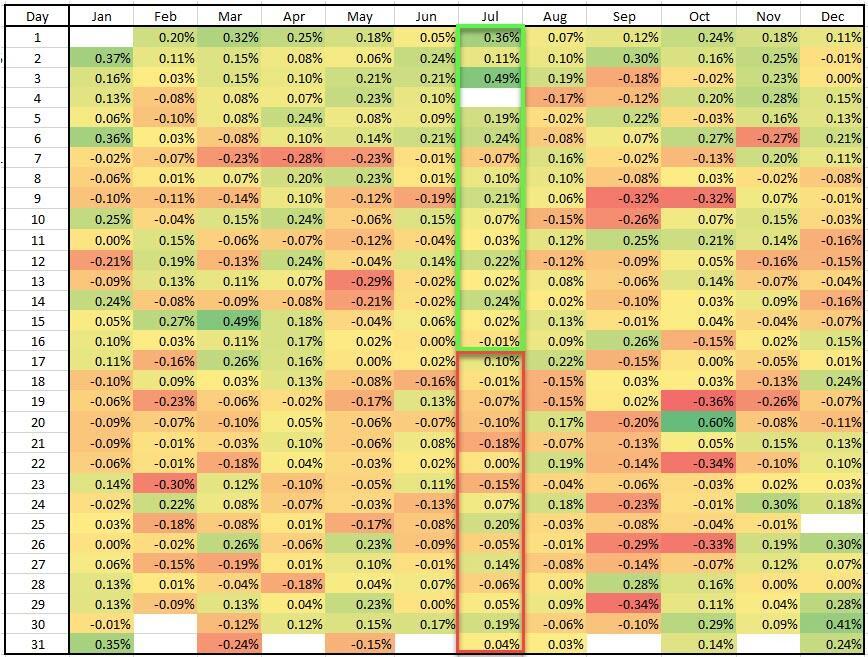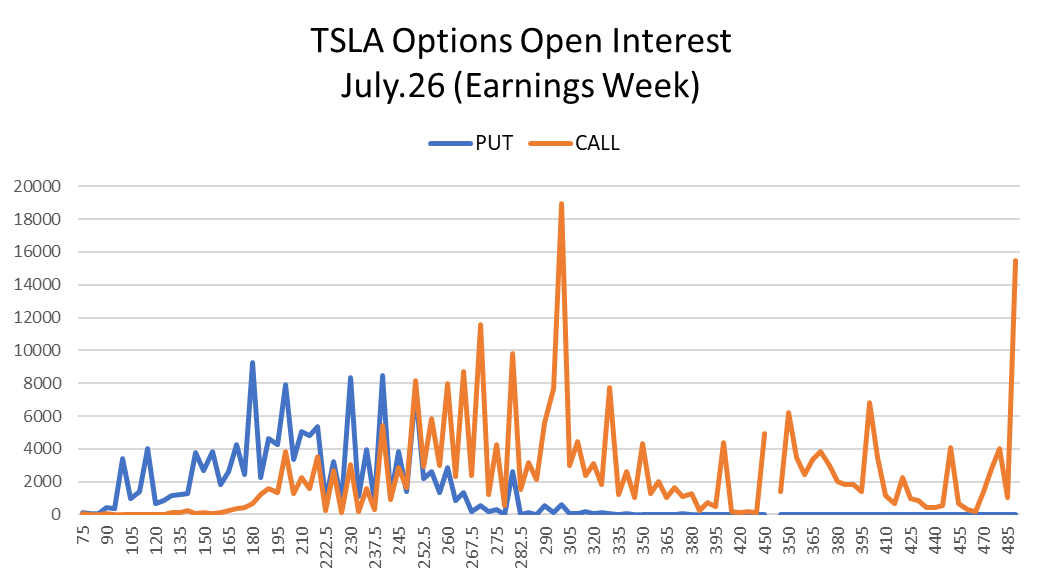BIG TECH WEEKLY | AI-Driven Trade On Earthquake, How To Find A Shelter?
Big-Tech’s Performance
The rotation of U.S. stocks continues, and led by technology stocks, a vote for this year's large gains in the company's pullback, so that the Nasdaq index recently fell consecutively.Despite the increased likelihood of a rate cut on the macro front, the market's "bullish sentiment" has clearly been broken, and the increased divergence among investors has led to increased volatility.
With the approach of the earnings season, the expectations of the full of the company may be subject to a greater test. Netflix this week's earnings report is relatively good, but a number of misunderstandings, still to the market scared out of a cold sweat.
By the close of trading on July 18, the best performer over the past week was $Tesla Motors(TSLA)$ +3.4%, with the rest pulling back in full. $Apple(AAPL)$ -1.49%, $Microsoft(MSFT)$ -3.15%, $Alphabet(GOOG)$ $Alphabet(GOOGL)$ -4.25%, $NVIDIA Corp(NVDA)$ -4.95%, $Amazon.com(AMZN)$ -5.79%, and $Meta Platforms, Inc.(META)$ -7.19%.
Big-Tech’s Key Strategy
The selloff was caught off guard, and it came from several main sources?
The cause of the selloff: massive hedge fund "de-grossing", which is a "simultaneous reduction of long and short positions" and is the largest hedge fund position reduction since November 2022, and the largest hedge fund position reduction since November 2022, which was led by Information Technology, followed by Health Care, Consumer Goods and Communication Services.In terms of sectors, the information technology sector led the way, followed by industrials, healthcare, non-essential consumer goods and communication services.
整体的系统性资金的持仓情况与标普500指数相关度
Depth of Impact: "AI-driven" volatility amplification, which refers to the increased market volatility caused by the widespread use of algorithms in financial markets.As AI trading systems are able to analyze large amounts of market data in real time and make trading decisions quickly, and as more and more investors and institutions adopt AI trading strategies, the overall behavior of the market may become more consistent, leading to collective action under certain conditions, which could lead to greater market volatility.
Valuation support: Investors' concerns about the fundamentals of these overbought and overpriced companies are also coming to the forefront.
Apple: analysts, including Ming-Chi Kuo, are starting to worry that the market is over Price-in the next generation of switchers;
Microsoft: concerns about OpenAI board changes, cloud growth rates, and the impact of global accidents'
Google: the substitutability of AI in search could reduce the growth rate of the advertising business, while the commercialization of its big models still lags behind OpenAI;
Meta: ad business concerns, and the potential threat of Trump's rise to power;
Amazon: potential decline in retail business momentum from CPI slowdown, and competitive threats from low-priced platforms;
Tesla: delays in Robotaxi implementation and uncertainty about commercialization continue to reduce industry demand.
Macro environment: Whether it's the turbulence of the election year, or interest rate cuts and "economic soft landing" concerns, will make the risk aversion heated up.
According to historical data, the second half of July is often the day of the stock market retracement is concentrated, so it is more likely to cause traders to "early rush".

What will happen next?
Growth small caps, especially those that were previously overly shorted, are starting to rally on short position unwinding and "Short Squeeze" after experiencing "negative YTD returns" and will see opportunities due to accelerating sector rotation and rising interest rate cut expectations.Growth stocks will see opportunities as sector rotation accelerates and rate cut expectations rise;
Companies in the defense category, the Dow, and the heavyweights further gained inflows briefly due to their risk aversion and value attributes.However, if the market pullback continues, these companies will still give back their gains at this stage.
Money market funds, as well as emerging market equities, typically see inflows before elections.The former is due to hedge fund "de-grossing" and deleveraging, while the latter is due to expectations of a potential pullback in the US dollar.
For big tech companies, those with strong asset quality and an industry cycle that is still on the upswing are likely to be more resilient.NVIDIA, for example, as the leader of the AI industry, as well as the current still stronger-than-expected performance, in the pullback process will still usher in a lot of previously discouraged investors to plunge.Of course, in the earnings season performance is impeccable (the current quarter results, guidance are more than expected, can beat the question of the decline in growth) is the most direct support.
Big-Tech Weekly Options Watcher
Tesla is set to report Q2 earnings next week, and given the recent sentiment reversal and expectations for Robotaxi, investors are paying more attention to Elon Musk's outlook for the next two quarters relative to the current, more transparent, current-period results.
Looking at the options distribution, Call open interest for next week's expiration remains larger than Put, while the 260 and 280 Call distributions remain the most important positions, but the IV differentials are not very large.And of course, the volume at the 300 round number is quite a bit higher than last week.There are just two signals:
If results are in line with expectations and guidance is within expectations, then it is likely to remain in its current position, suitable for a short-sale volatility trade;
If there is further outlook and investor expectations strengthen, then a further push to new highs for the year is likely, with strong upside expectations for both 280 and 300 out-of-the-money Calls.
Big-Tech Portfolio
The Magnificent Seven form a portfolio (the "TANMAMG" portfolio) that is equally weighted and reweighted quarterly.The backtest results are a far outperformer of the S&P 500 since 2015, with a total return of 2,041%, while the SPY has returned 218% over the same period, before pulling back after hitting record highs.
With the broader market hitting new highs this week, the portfolio has returned 35.35% year-to-date, outperforming the SPY's 17.01%.
Over the past year the portfolio's Sharpe Ratio has fallen back to 1.9 compared to SPY's 1.7 and the portfolio's Information Ratio is 1.2.
Disclaimer: Investing carries risk. This is not financial advice. The above content should not be regarded as an offer, recommendation, or solicitation on acquiring or disposing of any financial products, any associated discussions, comments, or posts by author or other users should not be considered as such either. It is solely for general information purpose only, which does not consider your own investment objectives, financial situations or needs. TTM assumes no responsibility or warranty for the accuracy and completeness of the information, investors should do their own research and may seek professional advice before investing.


namanya